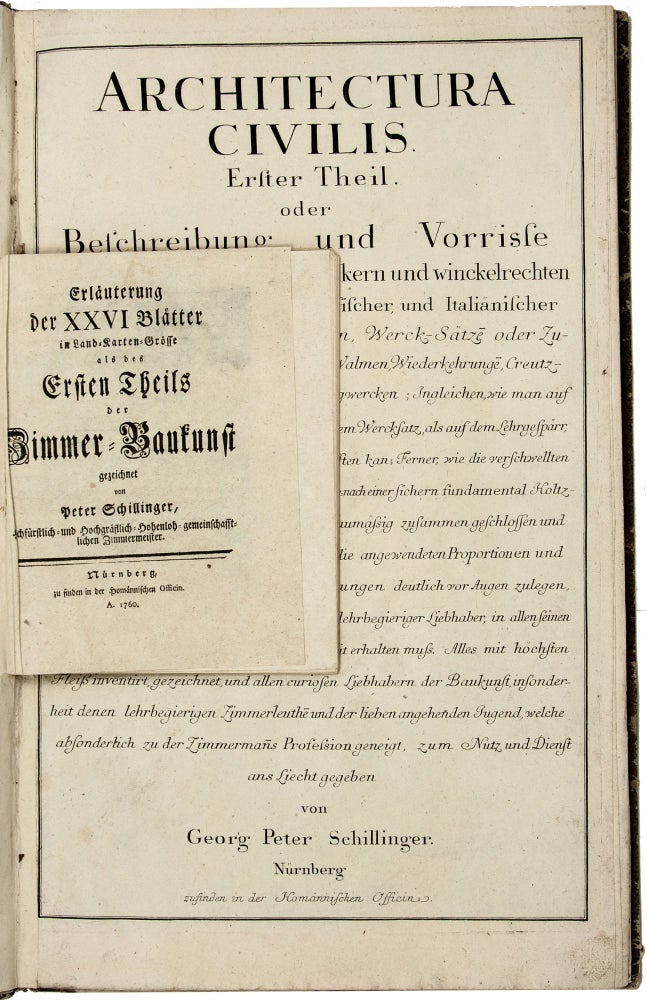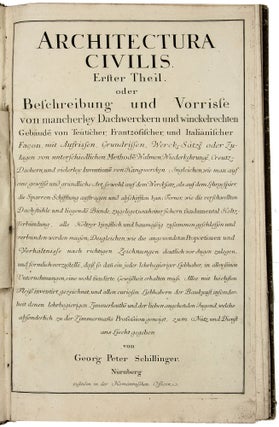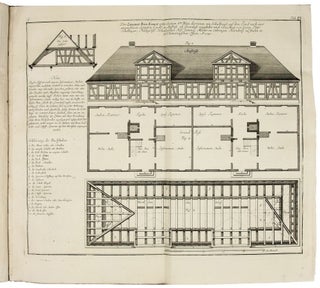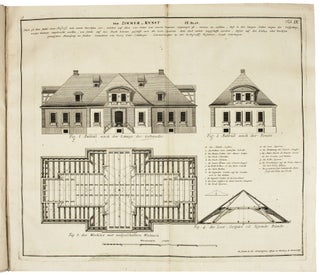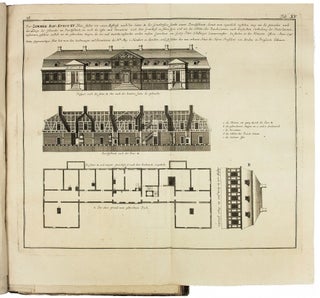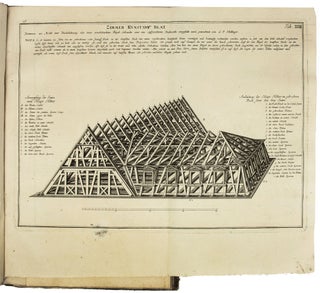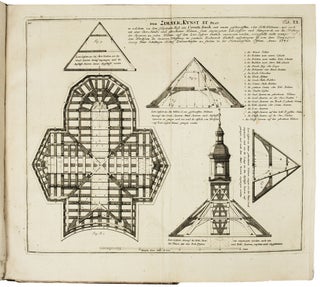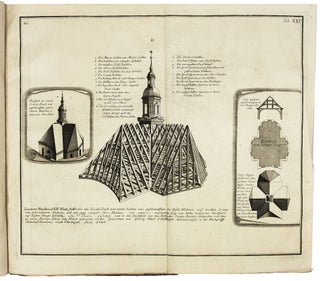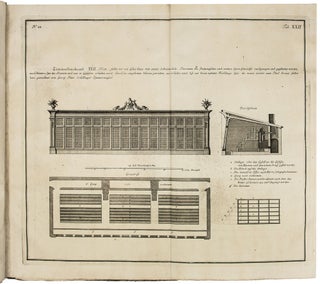Architectura civilis.
Large folio [54.5 x 34.5 cm], (1) f. engraved title, (1) f. engraved frontispiece, XXVI folding engravings. [Bound with:] [ROST, C. W. F.]. Erläuterung der XXVI Blätter in Land-Karten-Größe als des Ersten Theils der Zimmer-Baukunst, gezeichnet von Peter Schillinger. Nuremberg, Homann, 1760. 4to. (8) ff., 107 pp. Bound in contemporary sprinkled pasteboards. Some rubbing and edge wear to spine and boards. Occasional minor spotting, staining and wrinkling, plates X and XI bound out of order, minor wear to the folds of a few plates (e.g. XII). Very rare first and only edition of this extraordinary 18th-century folio atlas – entirely engraved and consisting of 26 folding and 2-full-page plates – devoted to the practice of carpentry in the construction of civic, commercial, domestic and princely architecture using the latest “German, French and Italian methods” (f. 1). Architectura civilis was written and designed by Georg Peter Schillinger, the Zimmermeister (master carpenter) at Öhringen, and presents dozens of specific examples of wood construction – including timber roof trusses, wood towers, and lanterns – intended both as templates for future construction and as records of recently realized buildings in the region. These include a barn, schoolhouse, a Sommerhaus, brewery, a stately home with projecting wings, orangeries, and a glasshouse for cultivating American plants (plate XXII). The present example is unusual in that it preserves the rare text booklet (Erläuterung der XXVI Blätter) issued years later to explain Schillinger’s plates in greater detail. Such a deluxe treatment of architecture was usually reserved for architectural books on monumental buildings in stone or on the classical orders and is only very rarely seen in reference to wood construction. The opulence of Schillinger’s plates (in both their large format and precision of engraving) no doubt dazzled the armchair carpenter, but the high level of quality here certainly was intended more to show the complexities of joinery to professionals intent on incorporating new methods and techniques at their jobsites. Schillinger provides plans and elevations of buildings as well as detailed views of joinery and depictions of how carpentry elements in the upper story tie into masonry structures below (types of joints and elements of top-chord and bottom-chord members of trusses, ridge beams, purlins, rafters, collar beams, tie beams, struts, etc.). Plates of building types typically include a note that the prints are available at the Homann shop in Nuremberg (presumably for individual purchase, perhaps for consultation on the building site). Schillinger also illustrates specific structures, including a stately house in Bredau in Prussian Lithuania (plates XIV-XV) and the Schloßgartens in Weikersheim (XXVI). The volume’s frontispiece depicts carpenters among their natural and squared timber in the foreground, with a completed princely residence visible in the background. Plates are variously dated 1745-48, and the work was released in fascicles, with further parts planned but never realized. In 1760 a smaller format text volume was released (preface signed by C. W. F. Rost) to supplement the plates. This volume opens with a paean to proper wood construction, a brief biography of Schillinger, and a list of plates. There follow detailed descriptions of each plate glossing difficult technical terms and providing further information about building types. Schillinger long worked for princely patrons at Öhringen and is remembered for several projects there, principal among them the Hoftheater. OCLC locates U.S. examples of the plate volume at Columbia, Getty, Penn, and Penn St., but no copies of the later text volume. *Ornamentstichkat. 2184 (only plate volume); Engelmann, Bibl. mech.-techn. 336.

